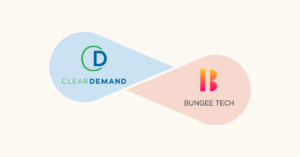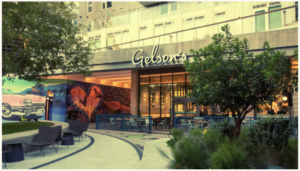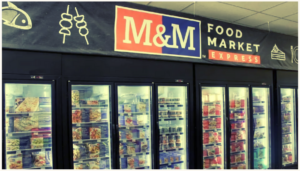From Manual Pricing to $6M+ in Profit: How One Convenience Retailer Transformed Their Margins
Reading Time: 13 Minutes
If you’re still managing prices manually or relying on broad price groups, you’re likely leaving dollars on the table and missing opportunities to outpace competitors.
One leading US convenience store chain, operating 600+ locations across multiple states, faced this exact challenge. With rising costs, changing consumer behavior, and fierce competition, their pricing approach — built on spreadsheets and gut-feelings — simply couldn’t keep up.
Overview
This regional c-store operator partnered with ClearDemand to optimize pricing across more than 10 categories ranging from beer and tobacco to candy and salty snacks.
The results were decisive: A 20% gross profit uplift worth over $6M in just 2.5 years – a value that continues to compound over time.
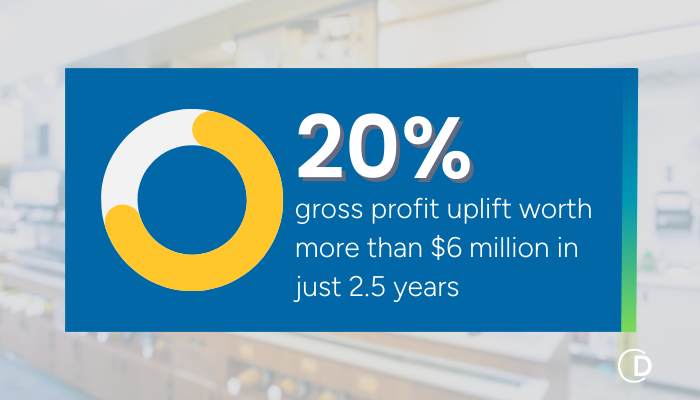
Here’s how they made it happen:
» Advanced Elasticity Modeling: Predicts customer responses to price changes so they could set the right price for every SKU at every store.
» Integrated Rules Engine: Balances optimization with business rules, ensuring the price recommendations align with the strategy.
» Streamlined Pricing Workflows: Automates manual tasks, saving the team hours of work and speeding up execution.
» Pricing Compliance Visibility: Tracks price change implementation at the store level – improving compliance from 50-60% to nearly 100%.
» Continuous Improvement: Measures the real profit impact of pricing decisions and continuously refines recommendations based on market shifts.
With ClearDemand price optimization, pricing became a scalable, data-driven growth engine — not a manual operational burden.

The Problem:
Manual Pricing Processes, Missed Opportunities
This convenience retail customer had been navigating the challenges of thin margins and fierce competition while balancing fuel pricing with in-store merchandise strategies.
Industry volatility, driven by pandemic disruptions, inflation pressures, and shifting consumer behaviors, made precise pricing decisions more critical than ever.
Before implementing ClearDemand, the retailer managed pricing manually across multiple spreadsheets using basic rule-of-thumb methods. This labor-intensive approach not only imposed a significant time burden on the pricing team but also left the data too fragmented to support strategic initiatives like targeted pricing for specific store groups. Their previous system limited them to broad state-level price groupings, preventing the development of more localized, nuanced pricing strategies that could respond to the varying market conditions within each state.
With a manual approach, the retailer was unable to effectively evaluate their pricing decisions. They lacked the capability to isolate how price changes specifically impacted sales or profit, making it impossible to measure true pricing effectiveness.
Before ClearDemand, the retailer had little visibility into their price implementation metrics. They were surprised to discover that approximately 50-60% of their pricing decisions were never actually being implemented at the store level—a critical gap that ClearDemand revealed and subsequently helped resolve.
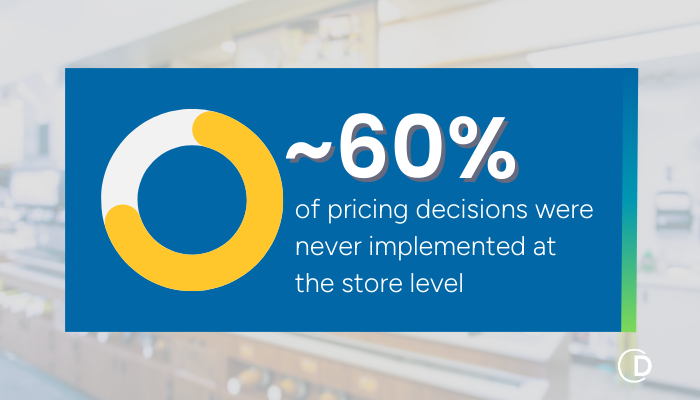
The Transformation
Price Optimization Solution to Fuel Profitable Growth
By moving to ClearDemand’s data-driven pricing platform, the retailer:
• Defined and enforces optimal pricing strategies:
Tailor pricing strategies based on customer demand elasticities and define more granular pricing zones versus their former, manual approach
• Strategic rule governance:
Establish business rule parameters that align with broader commercial strategy, ensuring the optimization solution delivers recommendations that support both short-term financial goals and long-term market positioning
• Performance measurement and impact quantification:
Implement a methodology to accurately measure the specific sales and profit impacts of pricing decisions to create transparent reporting that demonstrate the ROI of price changes
• Unlock broader strategic data insights:
Uncover hidden challenges and opportunities by enhancing their data foundation, transforming raw transaction information into actionable insights that could be used to drive other strategic pricing and merchandising decisions
The Results
Data-Driven Pricing at Scale
Adding ClearDemand’s price optimization solution, our retail customer was able to strategically plan, optimize, and evaluate pricing decisions.
This impact compounds over time as previously optimized prices continue delivering value, while the system simultaneously identifies new opportunities and adapts price recommendations to shifting market conditions.
Beyond financial benefits, our solution streamlined operations significantly:
→ The pricing team reclaimed over 8 hours weekly previously lost to spreadsheet management
→ Store-level compliance with price changes soared from just 50-60% to nearly 100%
This dramatic improvement ensured that carefully optimized pricing decisions were consistently implemented across the entire network, maximizing the system’s value.
Building on the retailer’s enhanced pricing maturity, ClearDemand was able to further refine store-level data, creating a foundation for a couple of strategic projects that further transformed their business:
Store Zone Clustering grouped locations into low, medium, and high elasticity clusters within each state, enabling:
- Higher prices in low-elasticity areas without risking sales volume
- More competitive pricing in high-elasticity regions to drive volume
- Localized adjustments based on market conditions
SKU Rationalization identified consistently underperforming products across multiple locations and replaced them with proven sellers, ensuring a more profitable and customer-relevant product mix.
Proving the Value
ROI Builds Confidence and Strategic Pricing Momentum
A critical part of the convenience store retailer’s success was the ability to accurately measure the profit impact of their pricing changes. Previously, they struggled to isolate how specific pricing decisions affected their bottom line amid market fluctuation, seasonal variations, and other complicating factors. With ClearDemand, they gained access to sophisticated elasticity modeling that compared actual results with recommended prices against a “what if” scenario—measuring the sales and gross profit generated versus what would have occurred had the original prices remained unchanged.
To kick off the process, ClearDemand walked our customer through our established, transparent measurement methodology to ensure clarity and alignment. For each agreed upon measurement period, the system meticulously tracked all pricing changes, implementation dates, and resulting revenue and gross profit, while maintaining records of the original prices. During this time, ClearDemand’s elasticity model continuously refined itself by adapting to dynamic factors such as seasonality, promotions, and competitor actions.
At the conclusion of each measurement period, ClearDemand calculated the value uplift by comparing actual gross profit against the hypothetical gross profit from the “what if” scenario. This scenario was created by applying ClearDemand’s end-of-period elasticity model to the original prices. The resulting “what if” projections are highly accurate because they account for the same external variables that impacted the actual scenario, thus isolating the direct impact of the team’s ClearDemand-powered pricing decisions.
At each check-in, the results exceeded the retailer’s expectations, so much so, that the pricing team gained executive support to expand the solution across more categories. The proven ROI also gave leadership the confidence to embrace more sophisticated approaches like zone-based pricing.
The powerful combination of intelligent price optimization and clear measurement enabled our customer to unlock over $6M of gross profit in just two and a half years (a ~20% uplift for categories managed by ClearDemand).
What once consumed hours of manual spreadsheet work evolved into a strategic advantage, with nearly perfect price change driving consistent results across all stores. By establishing clear elasticity-based zones and applying data-driven price optimization, the retailer transformed pricing from a reactive operational burden into a proactive profit engine.
The Latest Insights – Straight to Your Inbox
Sign up for the ClearDemand mailing list for actionable strategies, upcoming events, industry trends, and company news.






